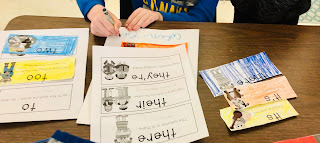Sometimes, there are just too many things for me to manage in a day! Seriously. I want to do it all! But, more often than not, the day flies by and I find myself reflecting back thinking things like, "I should have given my students more (insert: breaks, transition time, movement, mindful moments, sensory activities, coping skills, etc.). Ugh... I want to do better!

Well, today, I thought of ONE thing I could change. One thing I could take off my plate. One little gift I could give my students...
Instead of 'leading' our mindfulness activities in class, I found a way to facilitate them!
Now my students will be more self-directed, have more freedom of choice, and will be able to practice coping-skills and self-regulation!

{This post may contain affiliate links to materials I recommend. If you purchase something using these links I may receive a small commission.}















.png)
.png)







